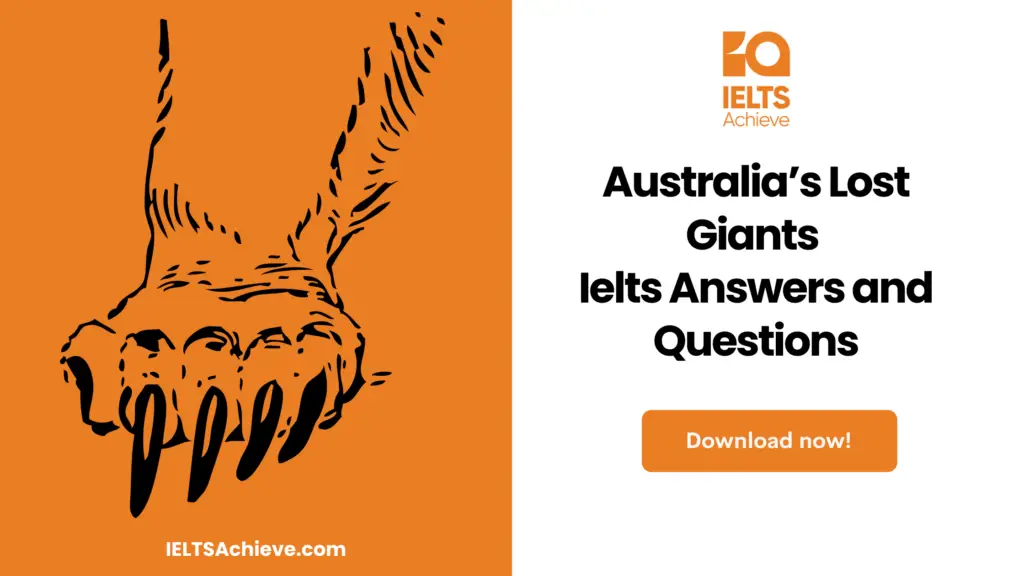The Blog post contains the following IELTS Reading Questions:
- IELTS Reading Locating Information
- IELTS Reading True/False/Not Given
- IELTS Reading Short Answer Question
Stay informed and prepared for success – Explore our comprehensive Reading Test Info page to get valuable insights, exam format details, and expert tips for mastering the IELTS Reading section.
IELTS Reading Passage: The Columbian Exchange

The Columbian Exchange
A. Millions of ages ago, continental movement carried the Old World and New World distant, splitting North and South America from Eurasia and Africa. Since this separation persisted for such a long time, it encouraged divergent evolution, leading, for example, to the development of vipers on one side of the Atlantic and rattlesnakes on the other. Human explorers partially flipped this trend after 1492. One of the more spectacular and important ecological events of the previous millennium was the artificial re-establishment of their connections through the mixing of Old and New World plants, animals, and bacteria, commonly known as the Columbian Exchange.
B. Old World crops like wheat, barley, rice, and turnips had not yet crossed the Atlantic to the west, and New World crops like maize, white potatoes, sweet potatoes, and manioc had not yet crossed the Atlantic to the east. Horses, cattle, sheep, and goats—all animals with Old World ancestry—did not exist in the Americas. The New World lacked equivalents to the domesticated animals linked to the Old World, aside from the llama, alpaca, dog, a few fowl, and guinea pig, as well as the pathogens connected to the Old World’s dense human populations and such associated animals as chickens, cattle, black rats, and Aedes aegypti mosquitoes. These pathogens included those that spread influenza, malaria, yellow fever, measles, chickenpox, and smallpox.
C. As might be expected, the European immigrants who made their way to the United States east coast planted crops they had brought with them, like wheat and apples. The colonists did not cultivate European weeds; instead, they preferred to uproot them, and these weeds thrived in the New World. The list “Of Such Plants as Have Sprung Up since the English Planted and Kept Cattle in New England,” left to us by Englishman and amateur naturalist John Josselyn in the seventeenth century, included couch grass, dandelion, shepherd’s purse, groundsel, sow thistle, and chickweed.
The earliest of these, a plantain (Plantago major), was given the name “Englishman’s Foot” by the Amerindians of New England and Virginia because they thought it would only grow where the English “have trodden, and was never known before the English came into this country”. Thus, the European settlers unintentionally contaminated American fields with weed seeds as they purposefully sowed crop seeds from the Old World. More importantly, they were removing and burning the forest’s minor flora and exposing it to direct sunlight as well as the hooves and teeth of livestock from the Old World. The local flora was unable to withstand the strain. Because they had evolved alongside large herds of grazing animals for countless years, imported weeds could.
D. In the early 1600s, people brought cattle and horses to North America, where they discovered a hospitable climate and terrain. Horses first arrived in Massachusetts in 1629 and in Virginia in 1620. With only collars with hooks at the bottom to catch on fences as they attempted to jump over them to reach crops, many of these animals roamed freely. The purpose of fences was to keep livestock outside rather than inside.
E. The Native Americans’ attempts to resist the Europeans were unsuccessful. The extent of indigenous peoples’ defeat cannot be fully explained by the brutality of white people, alcoholism, the killing and driving off of the game, or the expropriation of farmland. Germs, not people, animals, or plants, were the key element. The infectious diseases that wiped out the Native Americans were all terrible, but smallpox was the worst and most dramatic. The Algonquin of Massachusetts experienced the first known pandemic of that illness in British North America in the early 1630s. The victims “fell down so generally from the sickness as they were in their last moments not able to help one another, no, not capable of starting a fire nor fetch enough water to drink, nor any to bury the dead,” wrote William Bradford of Plymouth Plantation. The missionaries and traders who traveled into the interior of America shared the same horrifying narrative regarding smallpox and the natives. The epidemic wiped out half of the Cherokee just in 1738; nearly half of the Catawbas in 1759; two-thirds of the Omahas and perhaps half of the population between the Missouri River and New Mexico in the first years of the next century; and nearly every Mandan and perhaps half of the inhabitants of the high plains in 1837–1838.
F. The arrival of European livestock to the New World revolutionized New World agriculture and ecosystems, but the export of Native American animals has not. It hasn’t really made a difference that grey squirrels, muskrats, and a few other species have established themselves toward the east of the Atlantic and west of the Pacific. Some domesticated animals in America are raised in the Old World, but turkeys and guinea pigs have not replaced chickens and geese, and rabbits have not replaced chickens in butcher shops despite their utility in research.
G. Crop plants are the New World’s greatest contribution to the Old. The diets of hundreds of millions of Europeans, Africans, and Asians now include maize, white potatoes, sweet potatoes, different squashes, chiles, and manioc. Their impact on peoples of the Old World, like that of wheat and rice on those of the New World, greatly contributes to the explanation of the recent three-century increase in world population. A crucial component of that demographic explosion has been The Columbian Exchange.
H. All of this had nothing to do with the biosystems’ absolute superiority or inferiority. Environmental contrasts are involved. Europeans and Africans were used to living in one type of environment, while Amerindians were used to another. The plants, animals, and germs from the Old World were all brought to America by the people who lived there, resulting in an environment to which they had already become accustomed and which led to their population growth. Amerindian populations initially decreased because they had not evolved to European germs. The demographic triumph of the invaders, which was the most spectacular aspect of the Old World’s invasion of the New, still stands even though that decline has reversed in our time as Amerindian populations have adapted to the Old World’s environmental influence.
Unlock your full potential in the IELTS Reading section – Visit our IELTS Reading Practice Question Answer page now!
Recommended Questions:
Renewable Energy IELTS Reading Question with Answer
The Columbian Exchange IELTS Reading Questions
Questions 1-8
Reading Passage has eight paragraphs A-H.
Which paragraph contains the following information?
Write the correct letter A-H in boxes 1-8 on your answer sheet.
1. An overall justification for the achievement of the invasion of Old World species – ___
2. The cause of the decreasing indigenous population – ___
3. A discussion of how European animals inhabited the New World – ___
4. The origin of population growth in both the New and Old Worlds was – ___
5. An explanation of how certain animal species don’t have much of an impact on the Old World – ___
6. In both the Old and New Worlds, a comprehensive description of the species was lacking – ___
7. An explanation of an imported species with an English colonial name – ___
8. The theory for how new continents form – ___
Questions 9-12
Do the following statements agree with the claims of the writer in Reading Passage?
In boxes 9-12 on your answer sheet write
TRUE if the statement agrees with the information
FALSE if the statement contradicts the information
NOT GIVEN if there is no information on this
9. The two worlds’ crop exchanges significantly influenced the growth of the human population.
10. The turkey and other domesticated American animals gained popularity in the Old World.
11. The European colonizers had brutally murdered the native population.
12. To contain their cattle and horses, European settlers constructed fences.
Enhance your skills in identifying information as True, False, or Not Given. Click here to discover expert strategies and techniques for mastering this question type in the IELTS Reading section.
Questions 13-14
Answer the questions below using NO MORE THAN THREE WORDS from the passage for each answer.
13. Who first claimed that Native Americans from the American interior were suffering from European diseases?
14. What aspect of the Old World’s invasion of the New World is still present?
Unlock your full potential in the IELTS Reading section – Visit our IELTS Reading Practice Question Answer page now!
Recommended Questions:
Renewable Energy IELTS Reading Question with Answer
The Columbian Exchange Reading Answers
1. H
2. E
3. D
4. G
5. F
6. B
7. C
8. A
9. TRUE
10. FALSE
11. TRUE
12. FALSE
13.missionaries and traders
14. demographic triumph

We hope you found this post useful in helping you to study for the IELTS Test. If you have any questions please let us know in the comments below or on the Facebook page.
The best way to keep up to date with posts like this is to like us on Facebook, then follow us on Instagram and Pinterest. If you need help preparing for the IELTS Test, join the IELTS Achieve Academy and see how we can assist you to achieve your desired band score. We offer an essay correction service, mock exams and online courses.

